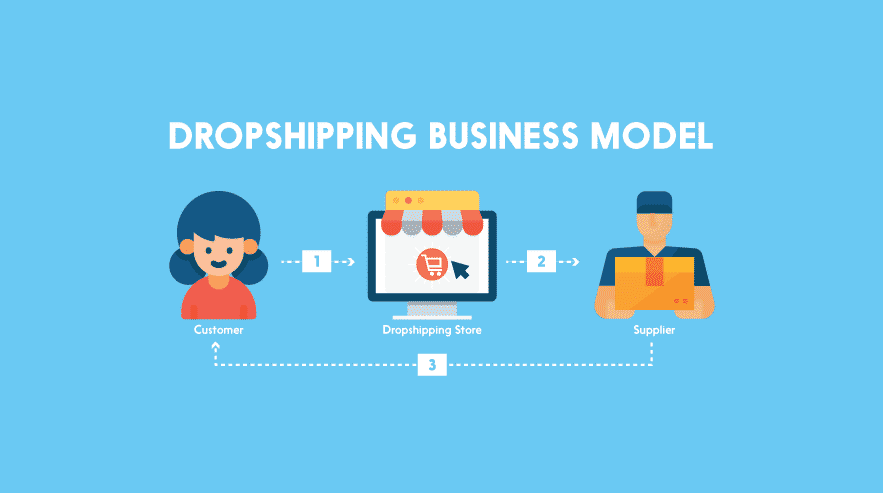In today’s competitive e-commerce landscape, starting a dropshipping business can provide a lucrative opportunity for aspiring entrepreneurs. With the right knowledge and strategies, you can create a successful online store without the need to invest in inventory or handle shipping logistics. This article will guide you through the essential steps and key strategies to help you establish and grow a thriving dropshipping venture.
Table of Contents
Understanding Dropshipping: A Comprehensive Overview
Before diving into the intricacies of starting a dropshipping business, it’s important to have a solid understanding of what dropshipping actually means. Dropshipping is a business model where online retailers partner with suppliers or manufacturers who handle the storage, packaging, and shipping of products. The retailer’s role is to market and sell the products, while the supplier takes care of order fulfillment. This eliminates the need for the retailer to stock inventory or deal with shipping logistics.
Defining Dropshipping
What is dropshipping? Dropshipping is a revolutionary business model that has gained significant popularity in recent years. It offers entrepreneurs an opportunity to start their own online business without the need for a physical store or the hassle of managing inventory. By partnering with suppliers or manufacturers, dropshippers can focus on marketing and selling products, leaving the operational aspects to their partners.
When a customer places an order on a dropshipper’s website, the retailer simply forwards the order details to the supplier. The supplier then packages and ships the products directly to the customer, with the retailer’s branding and packaging materials if desired. This seamless process allows dropshippers to focus on growing their business and providing excellent customer service.
The Role of Dropshipping in E-commerce
Dropshipping has become a game-changer in the e-commerce industry. Its low entry barriers and potential for high-profit margins have attracted aspiring entrepreneurs from all walks of life. With minimal upfront costs and the ability to start from anywhere, dropshipping has opened doors for individuals who previously may not have had the means to start their own business.
One of the key advantages of dropshipping is the wide range of products that can be offered to customers. Unlike traditional retail models, dropshippers have access to an extensive network of suppliers and manufacturers, allowing them to offer a diverse selection of products to their target audience. This flexibility in product selection gives dropshippers a competitive edge in the market.
Furthermore, dropshipping offers scalability like no other business model. As the dropshipper’s customer base expands, they can easily scale their operations to meet the growing demand. With the ability to automate certain aspects of the business, such as order processing and inventory management, dropshippers can focus on strategic growth and building strong customer relationships.
Pros and Cons of Dropshipping
Like any business model, dropshipping has its advantages and disadvantages that you should carefully consider before diving in.
- Pros of Dropshipping:
- Low startup costs: Since you don’t need to invest in inventory, the initial capital required is relatively low. This makes dropshipping an accessible option for aspiring entrepreneurs with limited financial resources.
- Wide product selection: With dropshipping, you have access to an extensive range of products to offer your customers. This allows you to cater to different market segments and diversify your product offerings.
- Flexibility and scalability: Dropshipping provides the flexibility to run your business from anywhere, as long as you have an internet connection. Additionally, as your customer base expands, you can easily scale your operations to meet the growing demand.
- Cons of Dropshipping:
- Low-profit margins: As a dropshipper, you’ll typically earn a smaller percentage of the product’s retail price compared to traditional retail models. This is due to the fact that you’re not purchasing products in bulk and benefiting from wholesale prices.
- Dependency on suppliers: Your success heavily relies on the efficiency and reliability of your suppliers. Any issues they face, such as delays in shipping or product quality problems, can directly impact your business and reputation.
Despite the challenges, dropshipping continues to be an attractive option for many entrepreneurs. With the right strategies and a commitment to providing exceptional customer experiences, dropshippers can build successful and profitable businesses in the ever-growing e-commerce landscape.
Essential Steps to Start a Dropshipping Business
Now that you have a grasp on what dropshipping entails, let’s explore the key steps required to kickstart your own dropshipping business.
Identifying Your Niche
Choosing the right niche is crucial for dropshipping success. Look for products that align with your interests and have a sizable target market. Conduct thorough market research to identify popular trends and find a niche that has demand but isn’t oversaturated by competitors.
Finding Reliable Suppliers
Partnering with reliable suppliers is vital for maintaining your reputation and ensuring smooth order fulfillment. Look for suppliers with a proven track record, prompt communication, and fast order processing. Evaluate their product quality and shipping capabilities to ensure customer satisfaction.
Building Your E-commerce Website
Your e-commerce website will serve as the central hub for your dropshipping business. Choose a user-friendly platform like Shopify or WooCommerce to create a visually appealing and functional online store. Optimize your website for search engines to enhance visibility and drive organic traffic.
Key Strategies for Dropshipping Success
Once your dropshipping business is up and running, you need to employ effective strategies to attract customers, provide exceptional customer service, and manage inventory and suppliers efficiently.
Effective Marketing Techniques for Dropshipping
To generate traffic and sales, implement various marketing techniques such as search engine optimization (SEO), social media marketing, influencer collaborations, and email marketing campaigns. Tailor your marketing efforts to resonate with your target audience and differentiate yourself from competitors.
Customer Service in Dropshipping
Delivering excellent customer service is essential for building trust and loyalty among your customers. Respond promptly to inquiries, offer hassle-free returns and refunds, and ensure timely order updates. Prioritize customer satisfaction to cultivate positive reviews and word-of-mouth referrals.
Managing Inventory and Suppliers
Proper inventory management is crucial to avoid stockouts and maintain seamless order fulfillment. Implement inventory tracking systems and monitor supplier performance regularly. Establish strong relationships with suppliers by communicating effectively and addressing any issues that may arise.
Overcoming Common Dropshipping Challenges
While dropshipping offers numerous benefits, it’s important to be aware of and prepared for the challenges that may arise along the way.
Dealing with Shipping Issues
Shipping delays, lost packages, and customs-related problems can occur in dropshipping. It’s crucial to choose reliable shipping carriers and keep customers updated on their order status. Provide clear shipping timeframes upfront and work closely with suppliers to resolve any shipping issues promptly and satisfactorily.
Handling Returns and Refunds
Since you’re not handling the products directly, returns and refunds can be more complex in dropshipping. Establish clear return policies and work with your suppliers to ensure smooth return processes. Communicate openly with customers and provide timely resolutions to maintain their trust.
Navigating Supplier Issues
Supplier-related problems, such as stockouts or communication breakdowns, can impact your business’s smooth operation. Maintain strong relationships with your suppliers by fostering open lines of communication and having backup suppliers ready when needed. Regularly assess supplier performance and be proactive in addressing any issues that arise.
By understanding the fundamentals of dropshipping, following the essential steps, implementing effective strategies, and overcoming common challenges, you’ll be well-equipped to start and grow a successful dropshipping business. Remember to adapt and evolve your strategies as the e-commerce landscape continues to evolve. With dedication and perseverance, your dropshipping venture can thrive in the ever-expanding global marketplace.











